What a rush there was, damn license: Cursed Clash, the first (and hasty) adaptation of Jujutsu Kaisen, is at the center of our review
Whether positive or negative, every review offers a possible key to understanding and the lens that we offer you for Jujutsu Kaisen: Cursed Clash, today, is one in theme with the anime. Since the transition from paper to screen operates with a diversity parallel to that of manga themselves compared to our own comics, it is with Japanese animation that the concept of filler. These are episodes which, as the name suggests, act as a stopgap to make up for the fact that the oriental animators are so overzealous that they quickly reach the point the manga has reached. The desire to ride the wave of successwhich leads to cheesy filler episodes in 80% of cases, is the same that we see in the creative process behind the game, reviewed in the format for Nintendo Switch.
Masahiro Sakurai talked about it, with impeccable if not suspicious timing, in the latest video on his YouTube channel, released a few days ago. Licensed games are often subject to restrictions, dictated by the need for fidelity to the work from which they come. At least that is certainly not missing here; rather, it is the first red flag that worries us when starting up. With licensed games there is only reason to show fear if the company logos overlap before the title screen. Too many cooks spoil the soup, as they say. Unfortunately, the succession of icons between the publisher and current godfather of manga, Bandai Namco and developers ByKing, Gemdrops Game Studios e Simplygon (plus the emblems of Unreal Engine and, for video compression, of CriWare) seems more like a procession visiting a home to offer condolences to the wasted potential.
The plot wears thin | Jujutsu Kaisen: Cursed Clash review
Like every review, that of Jujutsu Kaisen: Cursed Clash also starts from plot. As is easily predictable, this is one of the most successful aspects of the game, although hampered in part by an almost minimalist presentation at times. The title, giving credence to the use of the concept of filler as a metaphor a few lines ago, adapts the first season of the anime. We are not faced with a new Naruto: Ultimate Ninja Storm, however, created by the talented guys at CyberConnect2 and with great attention to every detail despite dedicating itself only to the saga of the hero as a young man. The game cited as an example set the standard for visual fidelity of anime in video games, sure, but not without that bit of bite and substance in the gameplay.
The narrative premise focuses on the plot in question: in the case of Gege Akutami’s work, we are “in a world in which” the main theme is not ninjas, pirates, “Hunters” or others, but the sorcerers capable of inflicting curses. Yuji Itadoriathlete, student and casual Fortnite skin, finds himself entangled in witchcraft by ingesting a finger belonging to the dangerous Ryomen Sukuna. To avoid being executed as the magician’s new vessel (yes, that kind of vessel), Yuji must learn to control his powers. A intriguing storythis one, which goes to clash with the narrative divided between missions, dialogues that invade the interface even during challenging battles, static frames from the anime and a difficulty prone to surges.
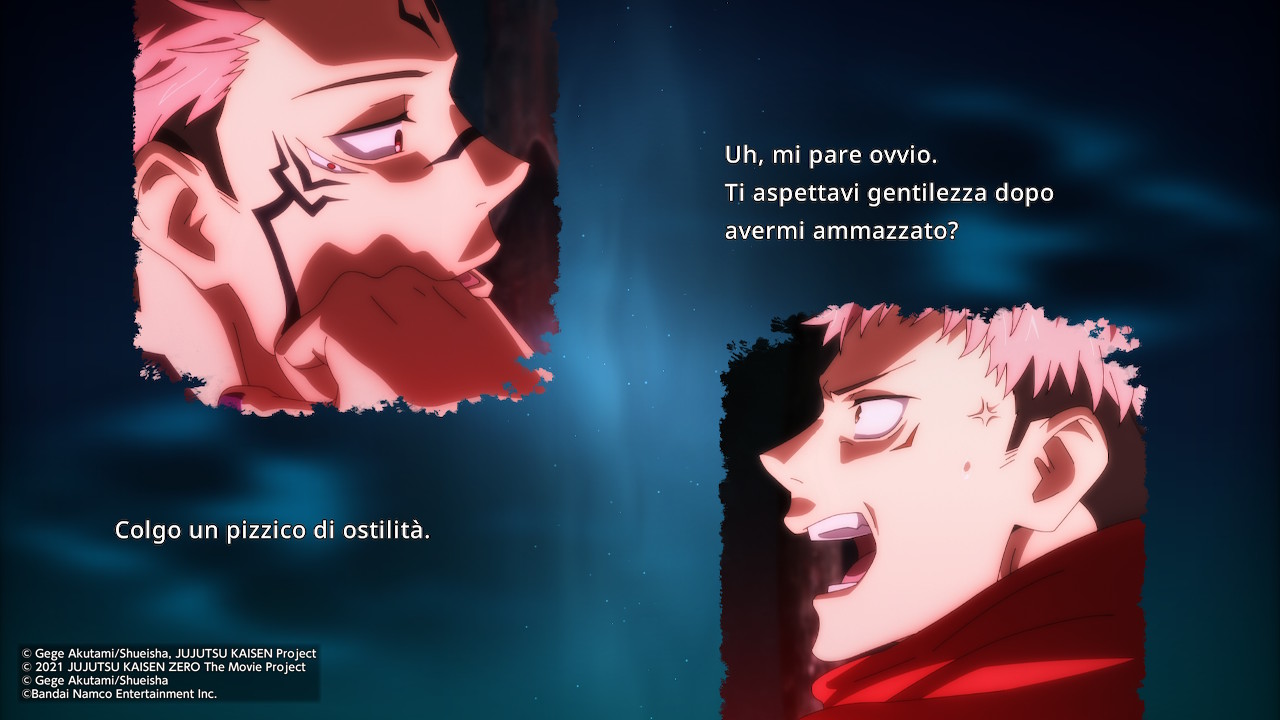
Be wary of dark fantasies | Jujutsu Kaisen: Cursed Clash review
In order to avoid resulting in logorrhea, let’s move on to gameplay. Jujutsu Kaisen fans also heaved a sigh of frustration when they learned that the first video game adaptation of the anime would be a arena fighter. In other words, a fighting game characterized by freedom of movement (with Injustice-style “lives”). The marketing hasn’t been as monumental as what we’re seeing for Dragon Ball Sparking! ZERO, and by discovering the first “stumbles” of the gameplay we also understood why. To put it simply, in addition to the genre being an easy way to adapt an anime to the videogame world, even as an exponent of the genre we are not looking at the next Dissidia Final Fantasy.
Which is a shame, given the very similar mechanics to Dissidia’s Audacity are also present here: most attacks do not deal damage, or at least not immediately. It takes the final blow of a combo, or better yet the Evil Energy extracted with it for more devastating attacks, in order to bring home a decisive move. There are also sprints, parries and, why not, even dodges. The main type of battle, regardless of mode, consists of doubles matchesbut it is also possible to face each other in duels or, if desired, in battles against two different targets. The right analog lever is in fact used exclusively to change targets, without ever controlling the camera.
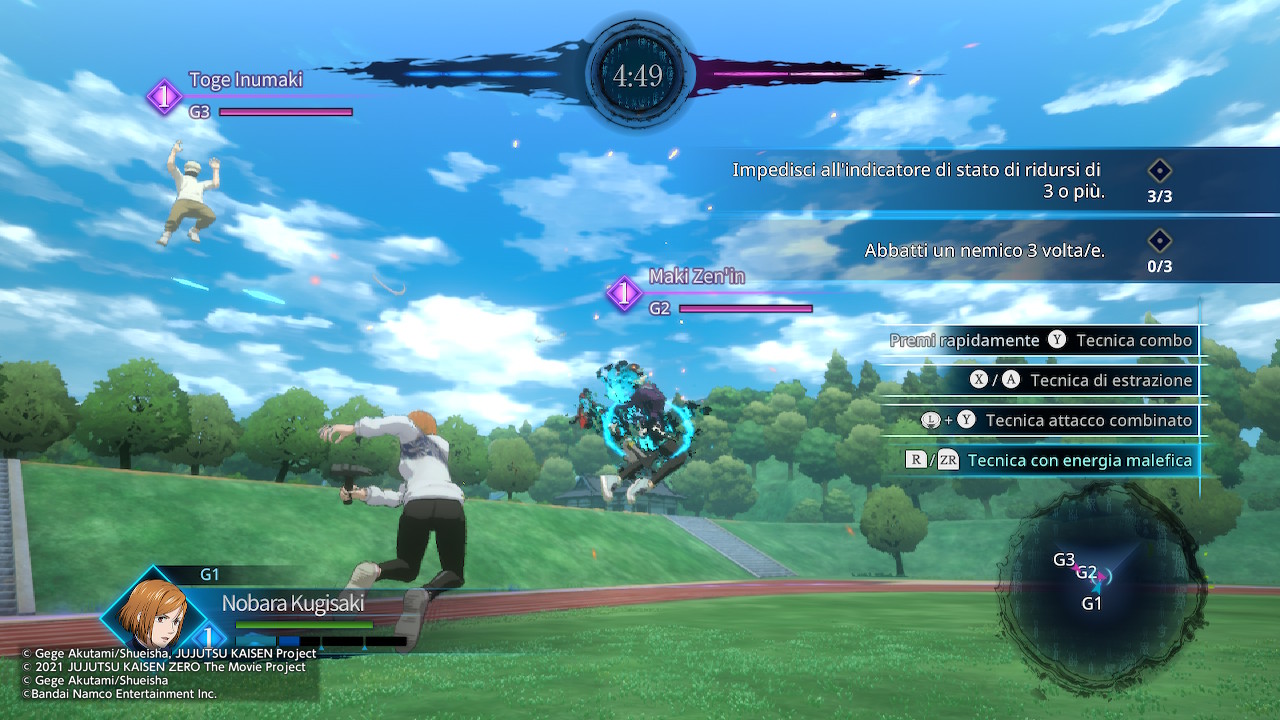
Majin Buu contro Raditz | Review Jujutsu Kaisen: Cursed Clash
Despite gameplay that isn’t exactly immediate, in the initial stages of the game Story mode the general flow does not fail to entertain. Partly because of the bizarre juxtaposition between moments of solemnity and the high school adventures of the cast, partly because in the first test fights one happens to be pleasantly surprised by the depth of the combat system. To scuttle everything, however, he provides a fairly unbalanced roster, considering that some characters enjoy moves that require multiple levels of charge and are devastating once thrown in the direction of the enemy. Or, still others (like the protagonist himself) excel in hand-to-hand combat while there are fighters equipped with much more advantageous ranged attacks.
The result is a licensed game which, as already mentioned in the aforementioned video by Masahiro Sakurai, succeeds in its aim of be very faithful to the original material, but to the detriment of the gameplay. The emphasis is all, especially in Story Mode, on the possibility of recreating key points of the manga’s plot, without however the developers having thought about it properly. This is a point we will return to shortly with a practical example. In general, the combat system is complex and, at times, even pleasantly deep. It’s the emphasis on fanservice that makes it sterile, despite Gojo’s commitment to waving his teacher’s wand during the game’s tutorials. In more flattering terms: a lot of zeal, but misplaced.
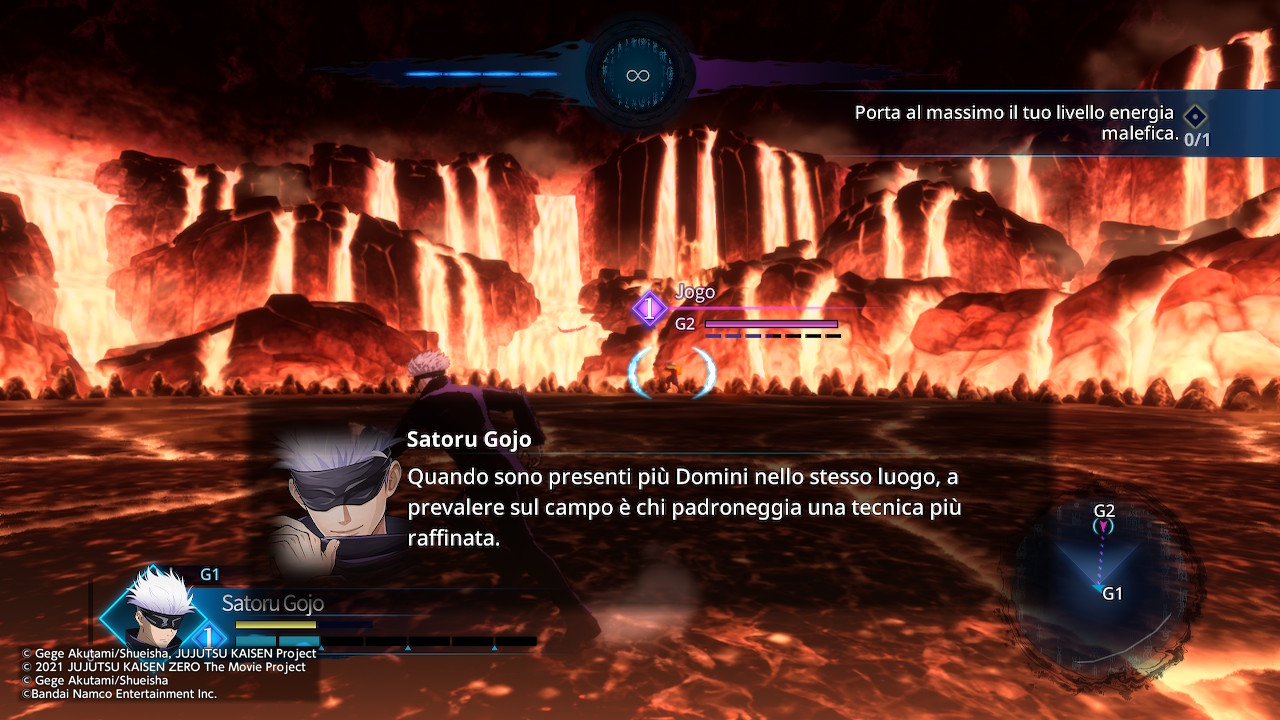
The curse of grinding | Jujutsu Kaisen: Cursed Clash review
There is no shortage of cosmetic elements to unlock. Now, if the experience with Bandai Namco’s adaptations (such as the praiseworthy Dragon Ball FighterZ) teaches us anything, it is that there can be several costumes in a fighting game, and each of them can take just as long to obtain even if the differences with another color they may be minimal. There in-game currency to spend in the shop can be obtained in the various modes, between the secondary objectives of the replayable missions in the Story Mode (with attached interpersonal relationships to unlock) and those that we will see later. Naturally, there are elements for which three thousand cucuzzi are enough as well as there are some that require 160,000. Plus, of course, the occasional ones loot boxalthough fortunately without microtransactions.
And at the risk of appearing excessively bigoted with a game that still reaches the threshold of sufficiency, it is here that we recognize the game’s most irritating flaw: its obsession with making us waste time. The padding manages to eclipse what we widely criticized in The Indigo Disc, with the complicity of the latter’s nature as DLC. Some instances in Story Mode demonstrate this: some missions see us alone against two opponents (who will have the audacity to criticize us for focusing on just one of them in the cutscenes!), demonstrating the unbalanced nature of the purely videogame aspect of the product. Others, such as the clash between Gojo and Jogo, despite being scripted, require you to launch long-loading moves against opponents who are very intent on interrupting you. We appreciate FighterZ’s “Spectacular Conclusion” Easter egg, but not when it forces itself on us tough victory conditions.
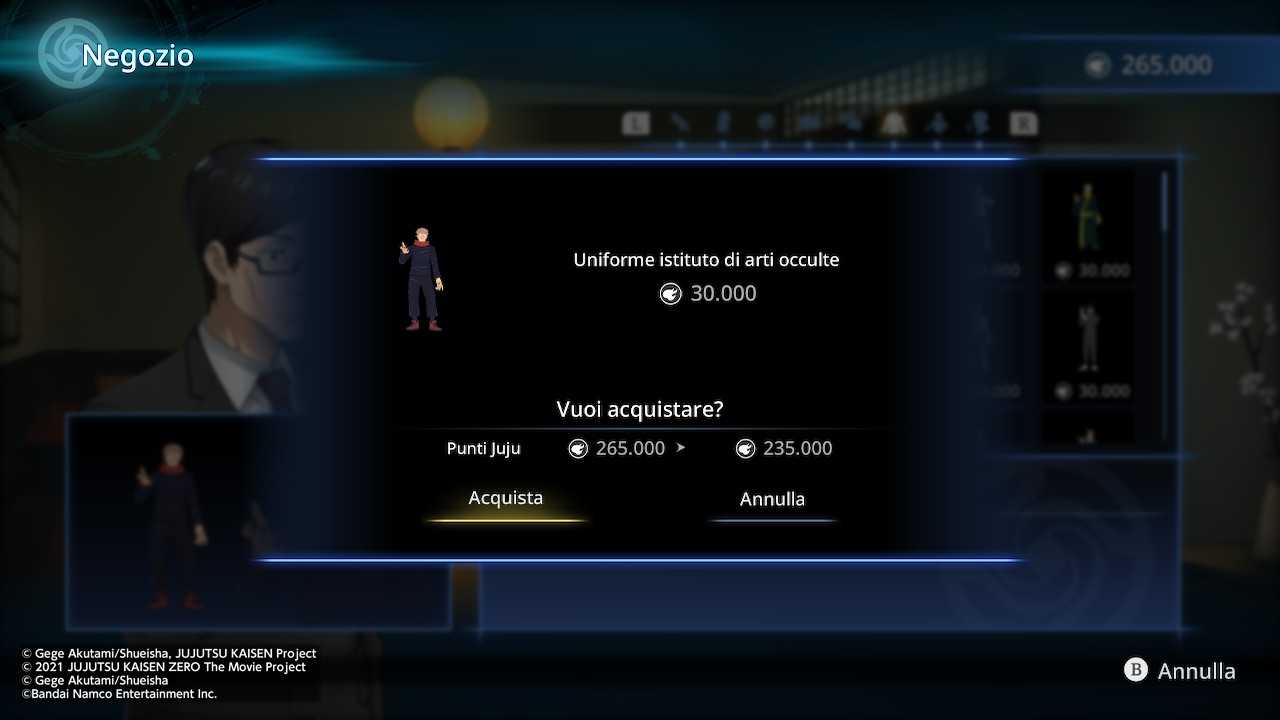
The Quidditch World Cup | Jujutsu Kaisen: Cursed Clash review
Of course, the game’s tendency to wink at multiplayer by natural inclination also brings with it a component online. In this sense, we participated in a couple of matches between the two main modes. You can compete in ranked matches e friendly matches. You can guess why we mostly tried our hand at this last category, but in general we can talk about good netcode. This is because, with the anachronistic connection with which the writer often finds himself dealing, we have had the opportunity to note that the title cares about at least decent match play. Specifically, Jujutsu Kaisen: Cursed Clash openly advises against online gaming for the “hypo-connected”, so to speak.
These are always double battles, which is why the Co-op Online entry is a bit redundant. They are also present lobbybut in this sense the absence of cross-play of any kind makes the entire online sphere of the game a potential flash in the pan. If nothing else, we noticed with equal pleasure that the title seems to implement the rollback, judging by the slight input lag and, in the worst cases, by the “slippery” movements on the ground. In this sense, given the rapid rise in popularity of manga and anime, we expect a sequel capable of correcting all the (many) corners to be smoothed out; online multiplayer, in particular, already seems to be at an excellent starting point.
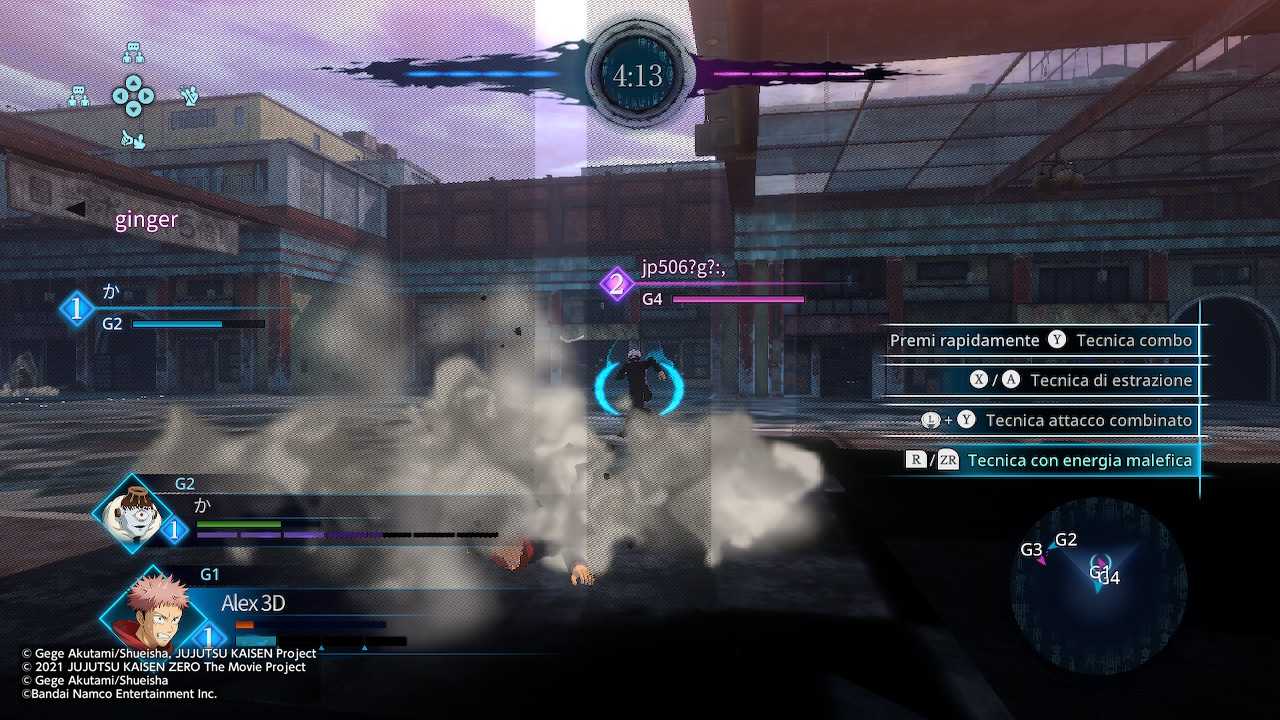
The otaku shrine | Jujutsu Kaisen: Cursed Clash review
In the Galleria include all the various elements to unlock that have no impact on gameplay, such as backgrounds, illustrations and songs. All elements, these, which again require in-game currency. To give credit where credit is due, we’re happy to break the argument in favor of online: it’s very easy to quickly scrape together in-game currency, as long as you focus on something else entirely. It all makes for a long-lived game, but between padding and vertical take-off from the challenge rate during Story Mode it’s doing it for the wrong reasons. Plot aside, the game is at its best in the online sphere, also because the Free Battle focuses on a menu so cumbersome that even the selection of characters becomes boring (for which the online menu is much more direct).
We once again brought up the minimalism of the presentation, symptomatic of a bandwagon decidedly ahead of the horse, because we couldn’t help but notice the aggressive monetization of the title. Specifically, we are talking about the DLCs sold sight unseen on day one, with the contents of the Deluxe Edition (characters) and of Ultimate Edition (characters and costumes) arriving later this year. By industry standards it is not a business practice to cry scandal about, but within the general framework already described the product is more targeted to fans already…







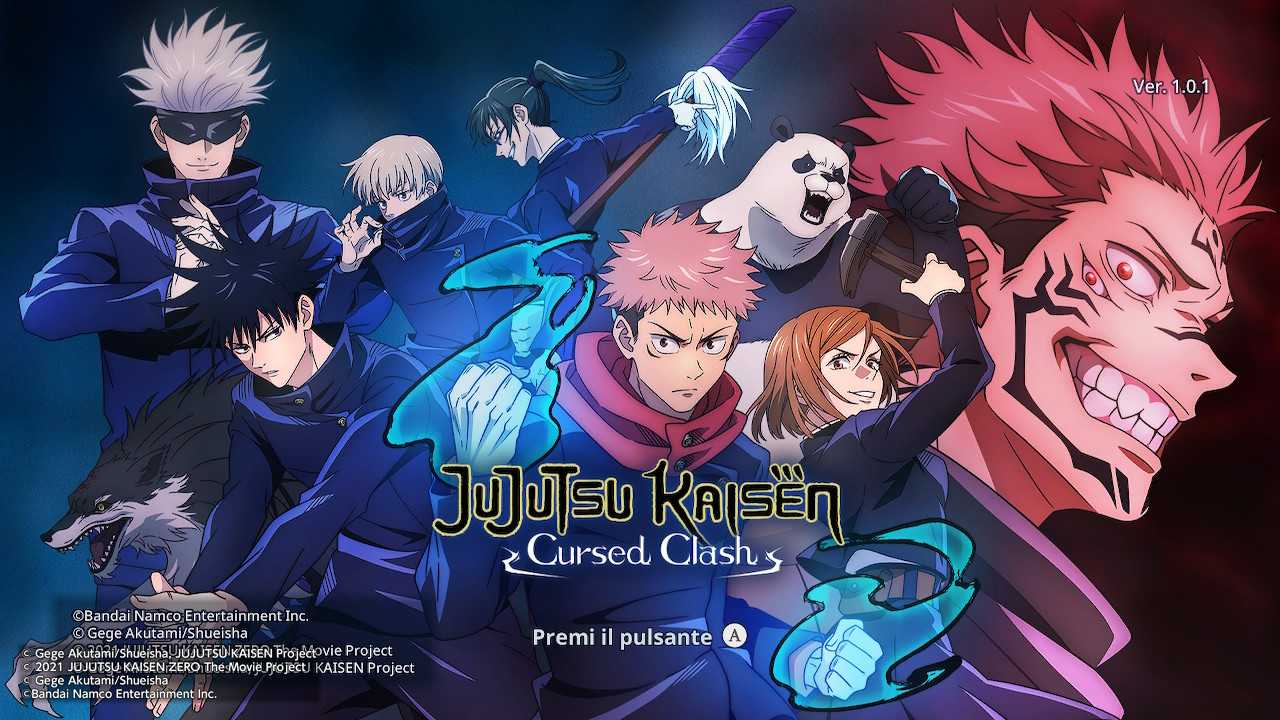




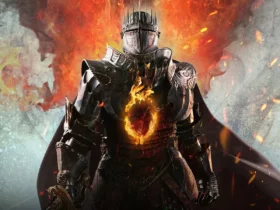
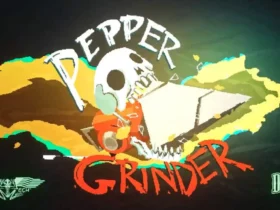
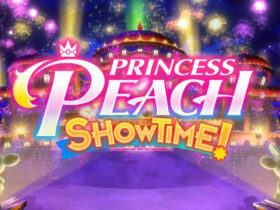
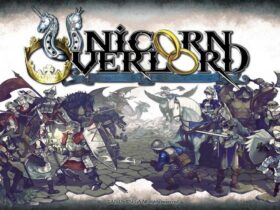
Leave a Reply
View Comments